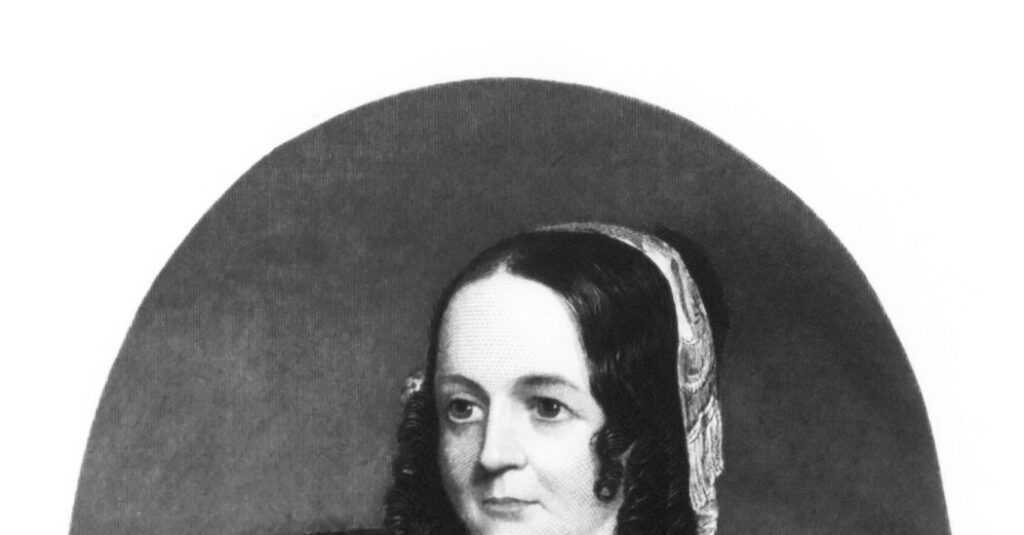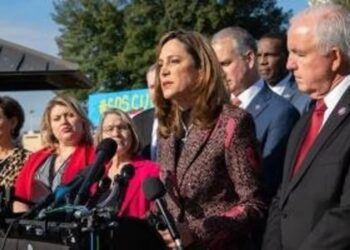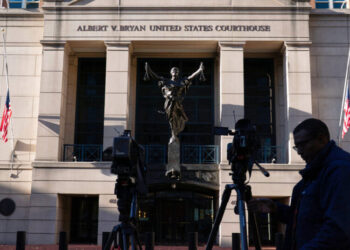Though the Thanksgiving story is typically associated with the harvest feast of Pilgrims and Wampanoags in Plymouth, Mass., 404 years ago this fall, the national holiday Americans celebrate every fourth Thursday of November only began thanks to a presidential proclamation from Abraham Lincoln in 1863, the same year he delivered the Gettysburg Address.
That’s not just historical trivia. What we are meant to commemorate on Thanksgiving isn’t merely a mythologized version of our origins. It’s a celebration of American rebirth — and of the possibilities, personal and political, that go with it.
The idea for a national Thanksgiving holiday was not Lincoln’s own. It came from Sarah Josepha Hale, among the most influential Americans you’ve probably never heard of. “A partial list of Hale’s achievements on behalf of women,” wrote Melanie Kirkpatrick, Hale’s biographer, “includes leading the fight for property rights for married women, campaigning for women to be welcome as teachers in public schools, supporting medical education for women, creating the first day care center for small children and the first public playground, founding a society dedicated to increasing the wages of working women, and helping to found Vassar College, the first college for women.”
That wasn’t all Hale did. She wrote a best-selling antislavery novel. She spent decades as editor of Godey’s Lady’s Book, the most widely circulated magazine in the United States before the Civil War. She wrote “Mary Had a Little Lamb.” And, beginning in the 1840s, she petitioned president after president to make Thanksgiving a national holiday.
Why was Hale obsessed with setting a national date for Thanksgiving? “There is a deep moral influence in these periodical seasons of rejoicing in which a whole community participates,” she wrote in 1835. But her purposes were also political: a national holiday, she argued, could help preserve the Union. Among her fiercest opponents, unsurprisingly, were Southerners who thought that designating a holiday was an issue for the states to decide.
In September 1863, following the Union’s victories at Gettysburg and Vicksburg, Hale again petitioned the president for an “annual Thanksgiving” to have “a National and fixed Union Festival.” In Lincoln and William Seward, his secretary of state, she found receptive ears. On Oct. 3, Lincoln proclaimed “a Day of Thanksgiving and Praise to our beneficent Father who dwelleth in the heavens.”
The proclamation, drafted by Seward, is somewhat verbose. It extols American plenty even amid the carnage of war. “Needful diversions of wealth and of strength from the fields of peaceful industry to the national defense have not arrested the plow, the shuttle or the ship.” But there are also unmistakably Lincolnian touches. It speaks of “our national perverseness and disobedience,” implores “the interposition of the Almighty hand to heal the wounds of the nation,” and commends “to His tender care all those who have become widows, orphans, mourners or sufferers.”
Those lines would echo, more poetically and profoundly, in Lincoln’s Second Inaugural Address. They are also of a piece with Lincoln’s larger political project, which went beyond saving the Union or even abolishing slavery.
It was about the perpetuation of our political institutions — the subject of Lincoln’s first significant political speech, at the age of 28, in Springfield, Ill., in 1838. How does one keep faith with the spirit that animated the founding of a liberal republic once the founders are long dead? How does one establish a “rebuke and a stumbling-block to the very harbingers of re-appearing tyranny and oppression,” as he put it in an 1859 letter in honor of Thomas Jefferson?
Part of the answer, Lincoln believed, lay in ritual. In 1838 he had spoken of the need to create a “political religion of the nation,” to which “the old and the young, the rich and the poor, the grave and the gay, of all sexes and tongues, and colors and conditions, sacrifice unceasingly upon its altars.” In 1863, Hale supplied him with an ingenious solution: a festival in which everyone could — and would want to — participate, not from a sense of obligation but with a feeling of joy.
That’s the genius of the holiday. Nobody — except your uncle — likes to talk about politics at the Thanksgiving table. Nobody should need to, either, because the occasion itself is inherently political. It’s an opportunity for families and friends and, by extension, communities, states and the country itself, to have a national reset. It’s when we remember that we can still be capable of setting everyday arguments aside, of recalling common bonds, of indulging a soft patriotism that’s also potent because it’s so unobjectionable. Thanksgiving, far more than the star-spangled Fourth of July, is what makes us Americans all over again.
That was also the spirit of the Gettysburg Address, another purported act of remembrance of the dead that is, in fact, an opportunity for rededication by the living — a “new birth of freedom.” The question for successive generations of Americans is: What kind of freedom should it be?
For Lincoln, the new birth meant saving government of, by, and for the people, and a nation where all are equal. For Hale, it meant extending the boundaries of opportunity for women. For Thomas Edison, it was about advancing the reach of science: In 1877, just 14 years after the first national Thanksgiving and while Hale was still alive, he read “Mary Had a Little Lamb” for the first-ever phonograph recording.
Down the generations, what we can most give thanks for isn’t just abundance. It’s the abundance of freedom, created by people for whom possibility and renewal, even in a world of bitterness, was theirs — and ours — to seize.
The Times is committed to publishing a diversity of letters to the editor. We’d like to hear what you think about this or any of our articles. Here are some tips. And here’s our email: [email protected].
Follow the New York Times Opinion section on Facebook, Instagram, TikTok, Bluesky, WhatsApp and Threads.
The post Thanksgiving and the New Births of Freedom appeared first on New York Times.




